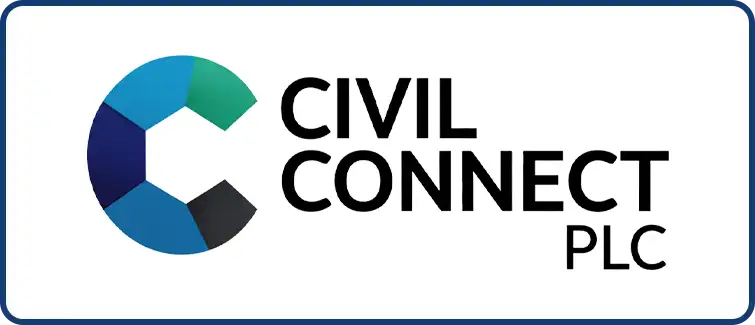- Home
- About Us
- Underwater Inspection
- Reactive & Onsite Support
- Specialist Surveying
- Civils & Rehabilitation
- Trenchless Rehabilitation (UV CIPP & No-Dig)
- Specialist Culvert Cleaning & De-silting
- Manhole & Joint Rehabilitation
- Retaining Wall Maintenance & Repair
- Pothole & Pavement Repairs
- Manhole Replacement & Installation
- Gully and Catch Pit Installation
- ACO Drain Installation, Repair & Cleaning
- Sustainable Urban Drainage Systems (SUDS)
- Foul Drainage
- Highways Drainage
- Soakaway Installation
- Sectors
The Essential Guide to Rail Drainage
Exploring the Critical Role and Innovations in Rail Drainage Systems
Rail drainage is often an overlooked yet crucial component of our rail network infrastructure. Without effective drainage systems, the integrity and functionality of the railway would be jeopardized, leading to potential disruptions in service.
This guide aims to provide an in-depth understanding of rail drainage, exploring its essential components, the challenges it faces, and the innovative solutions that ensure its effective operation.
What is Rail Drainage?
Rail drainage involves a system specifically designed to direct water away from railway tracks. While it may seem straightforward, the efficiency of any drainage system is determined by its ability to divert water from critical areas. This intricate system is vital for maintaining the foundation and stability of the railway.
A robust rail drainage system ensures the reliability of the rail network, enabling trains to operate safely in various weather conditions, including heavy rain, snow, and floods.
Different drainage designs are employed depending on the environment, ranging from simple ditches to complex systems with pumps and drains. Despite its often unnoticed presence, rail drainage plays a significant role in our daily lives.
The Benefits of Rail Drainage
A well-designed rail drainage system offers numerous benefits:
Extended Lifespan of Tracks: Prevents water damage, thereby prolonging the life of railway tracks.
Enhanced Stability: Reduces the risk of derailments by maintaining track stability.
Cost Efficiency: Lowers the need for expensive repairs and maintenance.
Operational Efficiency: Ensures smooth and timely train operations.
Safety Improvement: Protects the safety of both railway staff and passengers.
These advantages underscore the importance of rail drainage in facilitating the continuous and safe movement of trains.
Components of Rail Drainage Systems
Drainage Channels
These range from simple ditches to sophisticated channels designed to guide water away from railroad tracks, serving as the first line of defence against water damage.
Culverts
Culverts function as bridges, allowing water to flow across roads and other obstacles, thereby maintaining the integrity of the railway.
Pumps and Drains
In environments prone to heavy rainfall or flooding, pumps and drains are used to actively remove water from the tracks, ensuring continued railway operation.
Challenges of Ensuring Rail Drainage
Ensuring efficient rail drainage is a complex task, fraught with challenges:
Weather Variability: Unpredictable weather conditions, such as heavy rains, snow, or floods, can overwhelm drainage systems.
Network Size: The vast and extensive rail network requires tailored drainage solutions for each section.
Aging Infrastructure: Many rail lines have outdated drainage systems that need significant upgrades to meet current standards.
How Rail Drainage is Tested and Monitored
Continuous monitoring and testing are essential for maintaining efficient rail drainage systems:
Regular Inspections: Identify potential issues before they become significant problems.
Advanced Technology: Utilizes cutting-edge technology to monitor water flow and system performance.
Maintenance: Routine tasks, such as clearing drains and culverts, ensure the system’s optimal functioning.
These efforts collectively ensure the longevity and efficiency of rail drainage systems.
Technological Advances in Rail Drainage
Technology has significantly advanced the capabilities of rail drainage systems:
Modern Materials: Enhance durability, extending the lifespan of the drainage system and reducing maintenance needs.
Intelligent Monitoring: Real-time tracking of drainage performance allows for immediate response to potential issues.
Predictive Technology: Utilizes data and algorithms to forecast potential problems, facilitating preventative maintenance.
These advancements contribute to more efficient and effective drainage solutions.
The Economics of Rail Drainage
Investing in rail drainage systems presents a complex economic landscape. While the initial costs for designing, installing, and maintaining these systems can be high, the long-term savings are substantial.
Effective drainage systems prevent costly repairs, minimize service disruptions, and enhance safety.
Case Studies
Case Study Challenge Solution
- Case Study 1 Aging rail line with poor drainage Upgraded drainage system and regular maintenance
- Case Study 2 Rail line in flood-prone area Advanced drainage design with robust pumps and drains
- Case Study 3 Newly built rail line with no existing drainage Installation of a tailor-made drainage system
- Each of these case studies illustrates the importance of well-designed and well-maintained rail drainage systems.
Rail drainage remains an essential yet often unnoticed component of our rail network. As we face increasing demands on railway infrastructure and more extreme weather events, the importance of efficient and effective rail drainage systems will continue to grow.
Ongoing research, technological advancements, and the dedication of railway engineers ensure that our rail drainage systems are prepared to meet future challenges.
Next time you experience the smooth journey of a train, remember the vital role that rail drainage plays in ensuring your safe and reliable travel.
Subcribe Our Newsletter

At Civil Connect, we take pride in transforming subsurface complexity into lasting solutions. From detailed surveying to trenchless pipe repair, we expertly manage your assets to ensure they stand the test of time.
Copyright © 2025 All rights reserved. Civil Connect PLC.
Civil Connect PLC is a public limited company registered in England and Wales. Registered Number: 15368647 Registered Office: Cuckoo Wharf, Lichfield Road, Birmingham, England, B6 7SS

